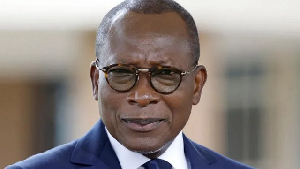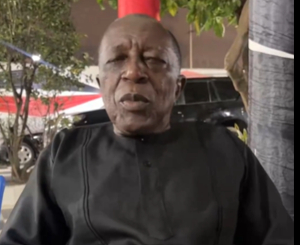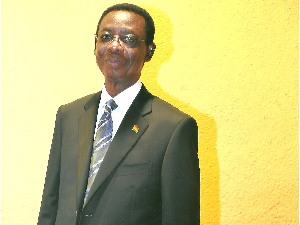Opinions of Monday, 9 November 2015
Columnist: Mike Avickson & Dzigbordi Fomenyah
Reliving the Anlo history through Hogbetsotso festival
The Anlo Kingdom has many local festivals that date back to the pre-arrival of the major religions, and which are still occasions for beautiful display of cultural traditions through dancing and some other performances. Chief among these festivals is the Hogbetsotso which is one of the alluring festivals of the Anlos that sees a huge influx of tourists every year at Anloga, the traditional and ritual capital of the people, catching a glimpse of the various activities.
Celebrated on the first Saturday of the month of November every year, the festival is used by the Anlos to commemorate the exodus and the bravery of their traditional rulers, who through endurance and sacrifice delivered them from the despot King Agorkoli.
Speaking at the launch of this year’s celebration in August in Accra themed: ‘Anlo On The Path To Unity, Peace, Progress And Development,’ the Awadada of Anlo, Togbui Agbesi Awusu II, called on all sons and daughters of the land not to lose sight of the qualities of love, unity, strength and resolve to sustain what kept their forefathers together during their wanderings in the wilderness.
He reminded all Anlos “not to allow history to judge us unkindly and the future generations to mock us and loathe us for squandering our opportunity of the moment for reconciliation, peace, prosperity and development.”
History Of Hogbetsotso
The term Hogbetsotso, according to historians, was derived from three Ewe words – Ho, meaning to uproot or move, Gbe meaning day and Tsotso, meaning crossing over. So literally, Hogbetsotso means the day the people rose up and moved out of Notsie.
The Anlos are believed to have settled at Notsie, their ancestral federated region (currently within the territory of the modern state of Togo) after migrating from Southern Sudan, and to their present home on the eastern coast of Ghana around the latter part of the 15th Century (1474). History documents that the Anlos settled first at Ketu in Yorubaland – which is near the Benin-Nigeria border – before migrating to live in Notsie in central Togo. At Notsie, the Ewes were treated so cruelly under the rule of wicked King Agorkorli that they decided to escape. Therefore, the people consulted an old lady soothsayer who told them that the king was planning to kill them and so they should find a way of escaping from the town. The enslaved ones therefore, devised a wise way to escape from the town.
The town in which they lived was fenced with a mud wall to make any attempt by the people to escape very difficult for them. This wall, for spiritual reasons, was sprinkled with human blood to make it difficult for anyone who would attempt to break it. The main strategy towards making an escape possible was that the women were asked to dispense water on one side of the wall anytime they had to dispose of dirty water. This made the wall weak, making it easily breakable and facilitating their easy escape.
From Notsie, they eventually reached their current home.
Activities Preceding The Festival
The first day activity is the mock-up day. This is a day that is set aside to demonstrate the way the departure or escape of the captives was organised. In order to fool the king and his elders, the departing group walked backwards so that their footsteps would give the impression that they were rather moving towards and not away from Notsie. The enacting of this incident today is through the medium of the Misego or Husago dance, which is believed to be the vehicle for the departure. The dance is performed mainly by women, especially the young ones, with many features portraying backward steps with songs to suit the occasion – a breathtaking event which is worth watching.
The third day of the celebration is the dodede and nugbidodo day. These are events meant for cleaning the immediate surroundings. The dodede rite, which literally means ‘removal of disease,’ involves the elimination of diseases and the expulsion of evil spirits which are held to be the causes of such diseases. Dodede is believed to serve as a fitting preparation for the people to be in touch with the Supreme God (Mawu), the smaller gods (trowo) and their ancestors (togbinoliawo); and this is purely a private ritual affair.
Nugbidodo means reconciliation. In the land of Anlo, the people always strive for harmony among themselves. The conviction is that the ancestors do not like misunderstanding and quarrels to remain unresolved because these give rise to ill-health and hinder progress. Therefore, nugbidodo is performed among family members, lineages, clans and among traditional rulers, to resolve all petty squabbles. In addition, there is a strong belief that the Hogbetsotso festival will not succeed till this ritual is duly performed.
Hanududu, which is one of the activities, is one that a visitor should not be left out of. All married landlords provide ingredients for their wives to prepare meals and an open-house get-together is subsequently held. The notion is that those who quarrel do not dine together. Therefore, this is organised to compel one another to feast together, leading to reconciliation among any parties involved and a manifestation of harmony among family members, clans and the population at large.
The climax of the festival is the durbar of chiefs and people held at Anloga. No festival is complete without music and dancing and the Hogbetsotso is no exception. During the durbar, people from all parts of Ghana, those in the Diaspora and foreigners turn up in their numbers to show deference to the paramount chief, who hitherto keeps himself away from public view.
The change
A lot has changed since the ascension of Togbui Sri II to the throne on July 1907. He embarked on a campaign to challenge the power of the priests and their gods to dictate the material and spiritual world.
As a missionary-educated businessman who became a political leader, he refused to abide by many of the religious rituals and regulations that governed his position.
He did not participate in the six-full months seclusion time customarily used to spiritually fortify any Awoamefia since the 17th Century.
He defied the ban on sewn clothing that had been imposed by Nyigbla (one of the traditional deities) and allowed anyone who wished to wear European-style clothing. Until then, women were not allowed to wear blouses or any item of sewn dress. He supported the opening of Anloga to Christian churches and schools.
While the ever-popular Agbadza dance is always performed to welcome the paramount chief and his entourage in, other dances such as Misego or Husago, Kpegisu, Atsia, Keta, among others, specifically associated with certain clans like Laklevu (the leopard dance) of the Bamee clan, are displayed colourfully.
Significance Of The Husago Dance
The Husago or Misego dance played a significant role in the historic escape or migration of the Anlos from Notsie.
As stated earlier, to make the escape look more inexplicable, the oppressed escapees turned their backs and facing the town, danced backwards through the wall to freedom.
Therefore, the Husago is danced backwards to commemorate the historic escape by the Anlos from Notsie.
Anlo kotsi klolo, nake tsi deka no dzo me binu (Anlo, the unified state, one firewood is able to prepare a meal).
Long live the Anlo Kingdom!
By Mike Avickson & Dzigbordi Fomenyah














